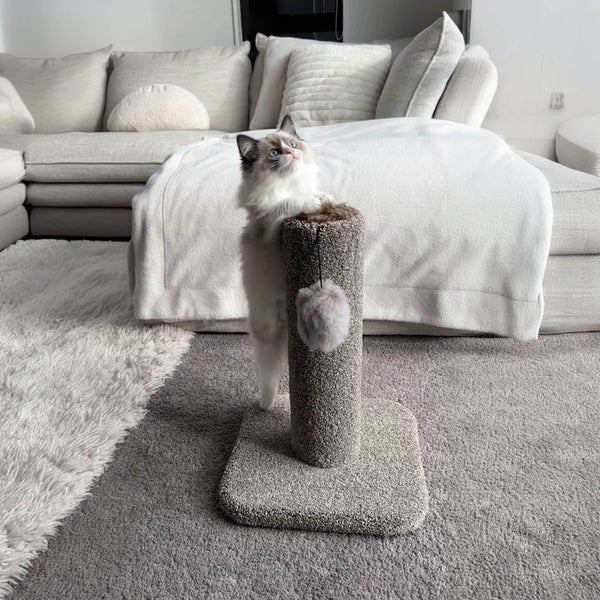It has long been assumed that when cats scratch objects with their front paws they are sharpening their claws. It turns out that this is only a secondary reason. Research on cat behavior suggests that the major reason for this behavior is communication. By roughing up the bark of a tree (or the leg of your favorite chair) the cat is letting other cats or people know where she is and what she is up to.
Cats tend to pick a small number of conspicuous objects in their environments to scratch such as trees, fence posts, the corner of the couch, etc, and return to them repeatedly. This is why the tree next door looks so scratched up and why your cat may find it difficult to leave your couch alone. The scratched surface leaves a highly visible mark that can be easily seen by other cats. In addition, cats have scent glands in their paws so that when they make scratching movements they leave odor cues that the cats can smell. We don't know exactly what cats are communicating with their scratching. Both males and females do it, it is done inside and outside the home and even by cats living with no other cats around. It could be a territorial warning or just a marker that announces "Fluffy lives here and is alive and well!" Cats don't scratch up your furniture to spite you or just to be destructive, but for specific reasons, one of which is communicating. Cats also scratch to stretch, during play, and possibly as a greeting or to relieve frustration when prevented from doing other things they want to do.
When scratching is done indoors on walls, furniture or carpeted areas it can result in considerable damage, owner frustration and sometimes the loss of the home for the cat. It is easier to prevent problem scratching rather than trying to change your cat's preference for the arm of your sofa after it has become an established habit. Thus, the goal is to establish acceptable scratching habits by getting your cat to prefer a scratching post rather than the arm of your sofa.














Leave a comment (all fields required)